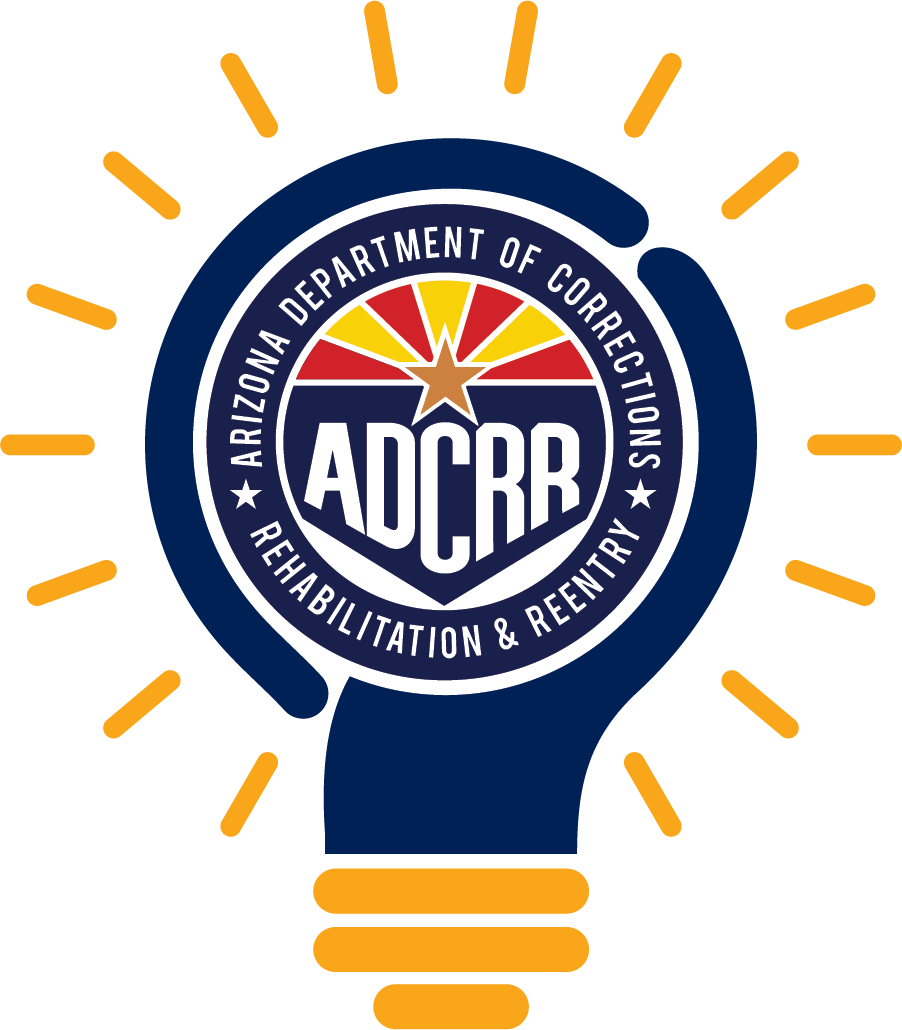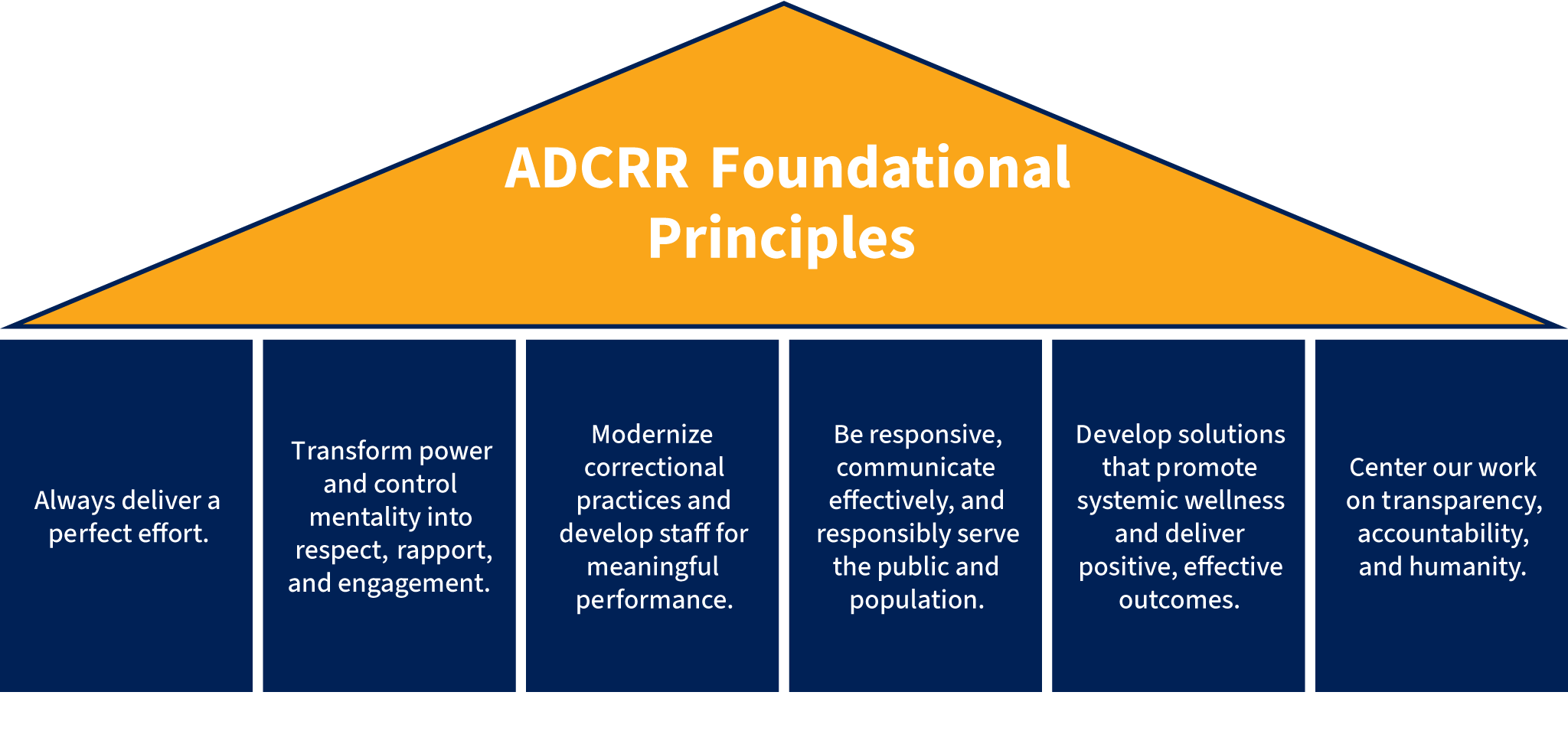
2024 Mission and Vision
“Our Mission is to enhance public safety across Arizona through modern, effective correctional practices and meaningful engagements.”
Goal 1: Build a Meaningful Organizational Culture and Promote the Development of Team
Strategies and Initiatives
- 1.1 Promote and demonstrate cross-division communications, planning, and teamwork
- 1.2 Create and deploy Staff Training Academies and Agency Learning Cohorts to promote professional preparation and development
- 1.3 Deploy the Staff Wellness Committee to implement strategies promoting staff safety, health, and work satisfaction
- 1.4 Revamp the Correctional Officer Training Academy (COTA), ensuring new cadet training addresses the priorities and practices of ADCRR
- 1.5 Establish COTA as the hub for training and professional development opportunities, utilizing technology to expand accessibility for staff (on-site, virtual, and hybrid)
- 1.6 Deploy Trauma-Informed Care, Modern Security, Use of Force, and Communication trainings for all corrections staff
- 1.7 Enhance ADCRR's emphasis on PREA as practice and expectation
- 1.8 Pilot body-worn cameras in two ADCRR housing units and one field office to determine feasibility and impact
Goal 2: Create and Implement Optimal Population Management and Progression Strategies
Strategies and Initiatives
- 2.1 Create a statewide Restrictive Housing Placement Program that promotes safety, security, and addresses underlying behavioral issues
- 2.2 Solidify and strengthen Tribal Relations, at complexes and in communities
- 2.3 Implement the recommendations of the Classification Workgroup
- 2.4 Increase community volunteer partnerships and services
- 2.5 Develop and pilot art therapy studios inside two secure housing units
- 2.6 Modernize and re energize the purpose and practices of the K9 team
- 2.7 Develop and launch dog therapy and training programs in secure housing units
- 2.8 Expand Pell-funded correctional education programs for broader accessibility
- 2.9 Redeploy vocational training/career-technical education programs with partner schools and employers, using industry certification standards, to prepare for community reentry
- 2.10 Solidify the purpose and expectations of the Contraband Interdiction Task Force
Goal 3: Deploy Quality Delivery of Services and Continuity of Care in Complexes and Communities
Strategies and Initiatives
- 3.1 Implement a modern, validated, and efficient risk and needs assessment for meaningful programming placement, case management enhancement, and community reentry
- 3.2 Develop and implement a community reentry case management software system
- 3.3 Formalize and expand Veteran’s services and resource connections
- 3.4 Modernize the Transgender Review Committee and associated practices
- 3.5 Create opportunities for community peer mentors to reach in and impact high risk populations
- 3.6 Award and implement the Community Mother and Child Bonding program
- 3.7 Achieve substantial compliance towards Jensen v. Thornell and the US DOJ's Agreement for Low Vision and Blind Services
- 3.8 Deploy Women's Services plan, including gender-responsive trainings, to improve physical, emotional, health-related and behavioral outcomes
- 3.9 Assess and assign rehabilitative purpose to each ADCRR housing unit
- 3.10 Demonstrate a higher level of healthcare services through performance and outcomes
- 3.11 Conduct regular and meaningful statewide emergency response drills/exercises
Goal 4: Achieve Modernization and Sustainability of Practices and Resources
Strategies and Initiatives
- 4.1 Efficiently invest in ADCRR's aging infrastructure to preserve safety, security, and usefulness
- 4.2 Practice fiscal responsibility, ensuring resources are best used for intended outcomes
- 4.3 Pilot the use of tablets by correctional officers in two ADCRR housing units for logging activity, communications, and accountability
- 4.4 Conduct a Department-wide assessment of Complex security cameras and needs
- 4.5 Strengthen and solidify the security practices for all Complex and unit ingress points
- 4.6 Strengthen the security and monitoring practices for unit visitation activities
- 4.7 Modernize ADCRR's Extreme Heat Safety and Relief Strategy
- 4.8 Install and expand Internet capabilities and access within ADCRR complexes, to promote communication, documentation, and efficiency amongst staff
- 4.9 Evaluate the agency recruitment strategy and impact, and formally partner with Arizona-based 2 and 4 year universities
- 4.10 Implement RFID technology in remaining restrictive housing/sub-class areas
- 4.11 Update and humanize Complex dining areas and visitation rooms, statewide
- 4.12 Review and consider for implementation recommendations of the FY24 System Assessment


